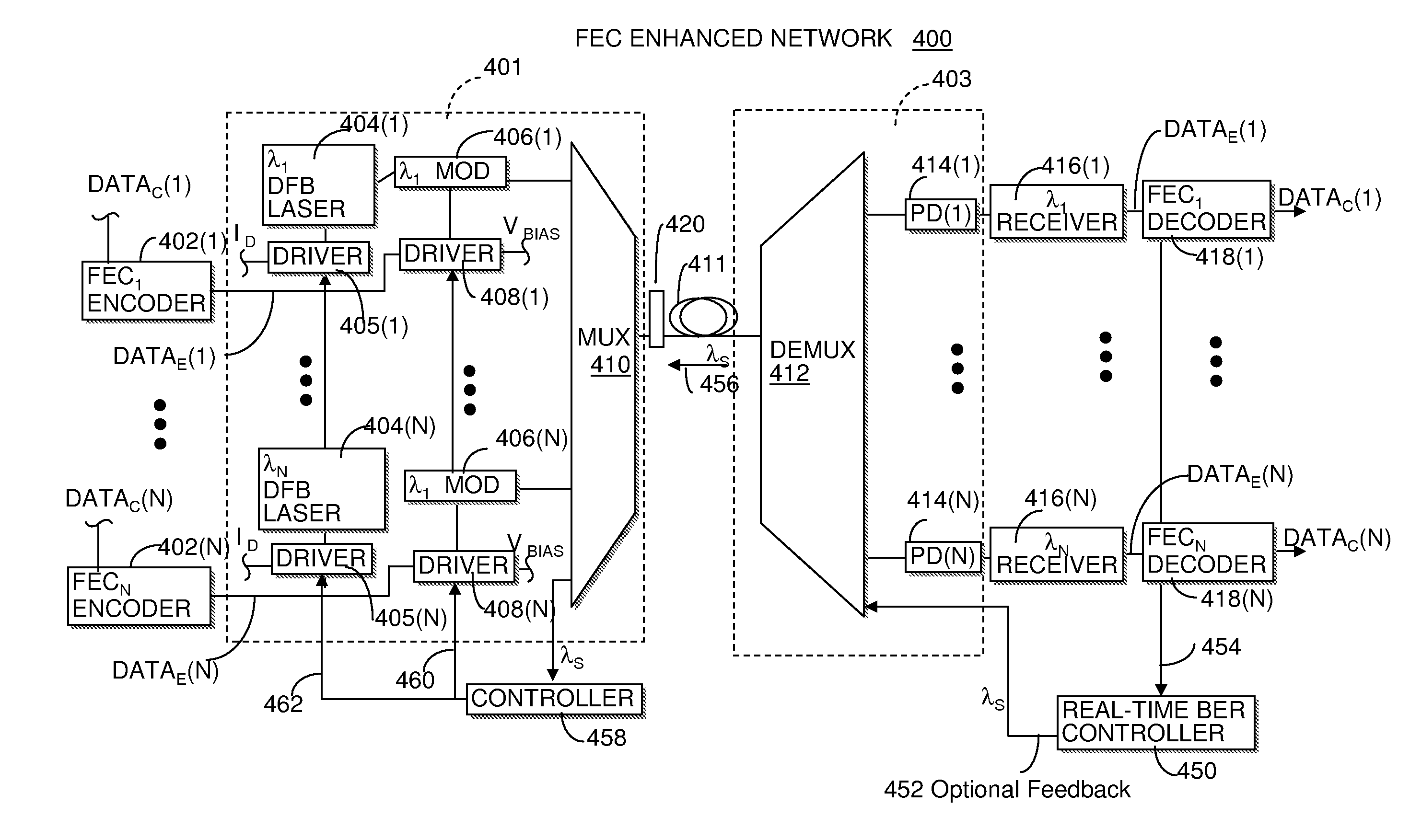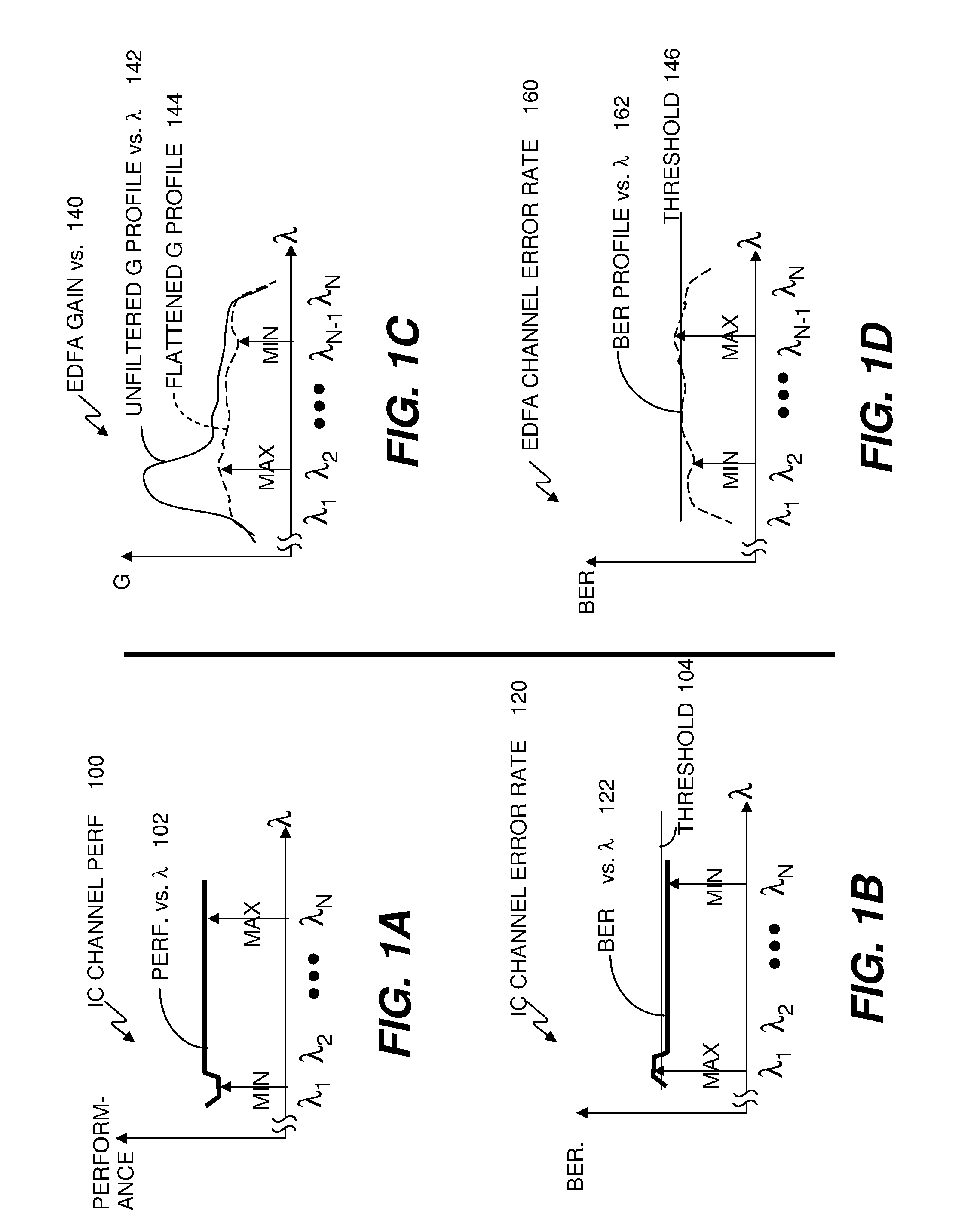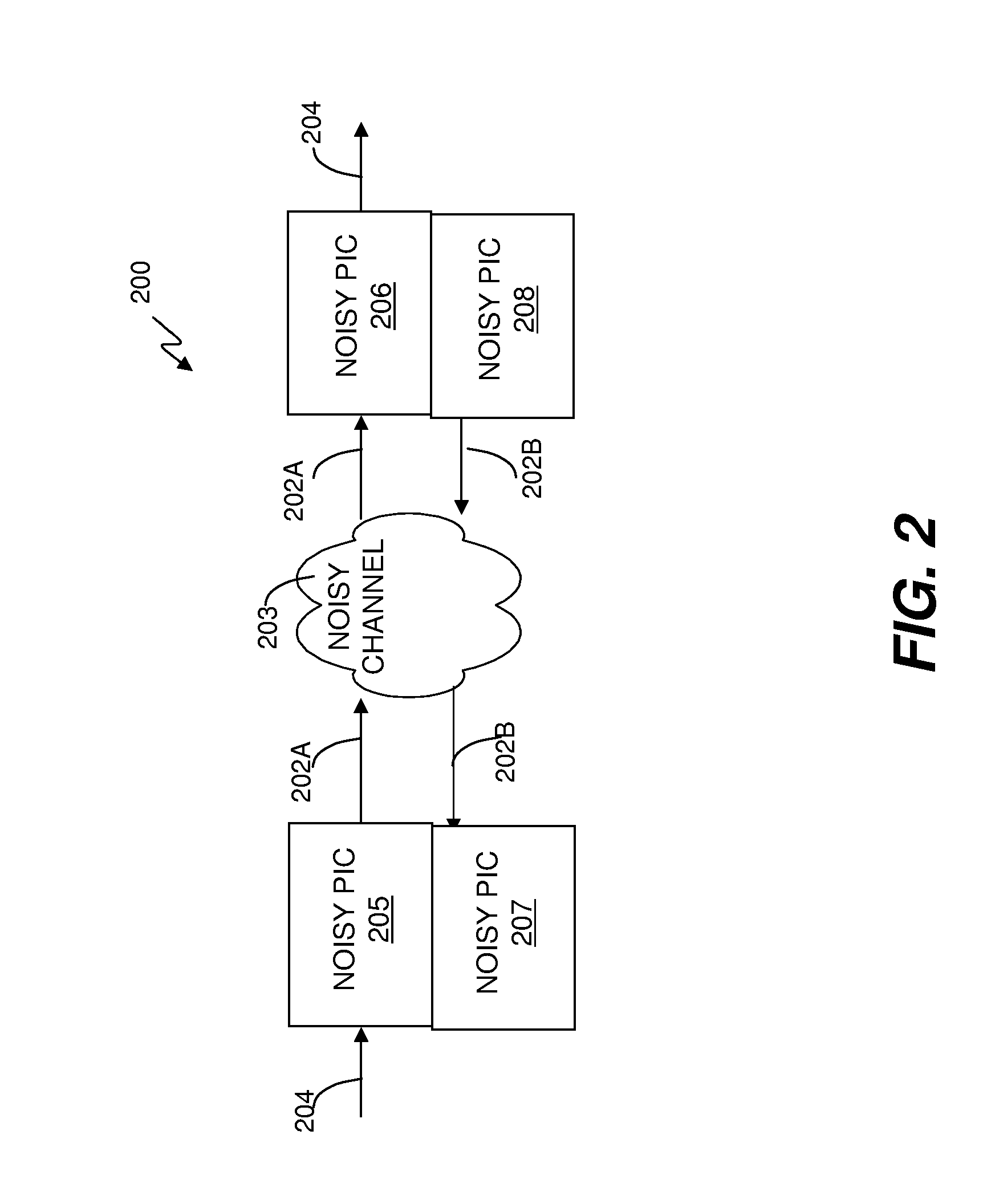Forward error correction (FEC) enabled photonic integrated circuit (PICs) chips with multiple signal channels
a technology of forward error correction and photonic integrated circuits, applied in the direction of transmission monitoring, instruments, semiconductor lasers, etc., can solve the problems of deteriorating channel signals, affecting the efficiency of optical communication networks, so as to improve yield, wide choice of design in channel count and/or channel spacing, and the effect of reducing the spacing
- Summary
- Abstract
- Description
- Claims
- Application Information
AI Technical Summary
Benefits of technology
Problems solved by technology
Method used
Image
Examples
Embodiment Construction
[0030]Reference is now made to FIG. 4A of the present invention, as adapted from FIG. 70 of U.S. Pat. No. 7,116,851, supra. As shown in FIG. 4A, a forward error correction (FEC) enhanced optical transport network 400 shown as single direction transmission in a point-to-point optical transmission link including at least one multi-channel TxPIC 401 and at least one multi-channel RxPIC 403 in optical communication optical link 411. It should be understood that FEC enhanced network 400 can be bidirectional where multi-channel TxPIC 401 can also be a transceiver that includes a receiver, such as RxPIC 403 therein. In any application as a transmitter, receiver, or transceiver, the present invention is well suited to any combination and quantity of integrated or discrete transmitter and receiver components. For example, one communication system could use a transceiver with only a single integrated PIC pair (a TxPIC coupled to an RxPIC), while another system uses any combination of the two ...
PUM
 Login to View More
Login to View More Abstract
Description
Claims
Application Information
 Login to View More
Login to View More - R&D
- Intellectual Property
- Life Sciences
- Materials
- Tech Scout
- Unparalleled Data Quality
- Higher Quality Content
- 60% Fewer Hallucinations
Browse by: Latest US Patents, China's latest patents, Technical Efficacy Thesaurus, Application Domain, Technology Topic, Popular Technical Reports.
© 2025 PatSnap. All rights reserved.Legal|Privacy policy|Modern Slavery Act Transparency Statement|Sitemap|About US| Contact US: help@patsnap.com



